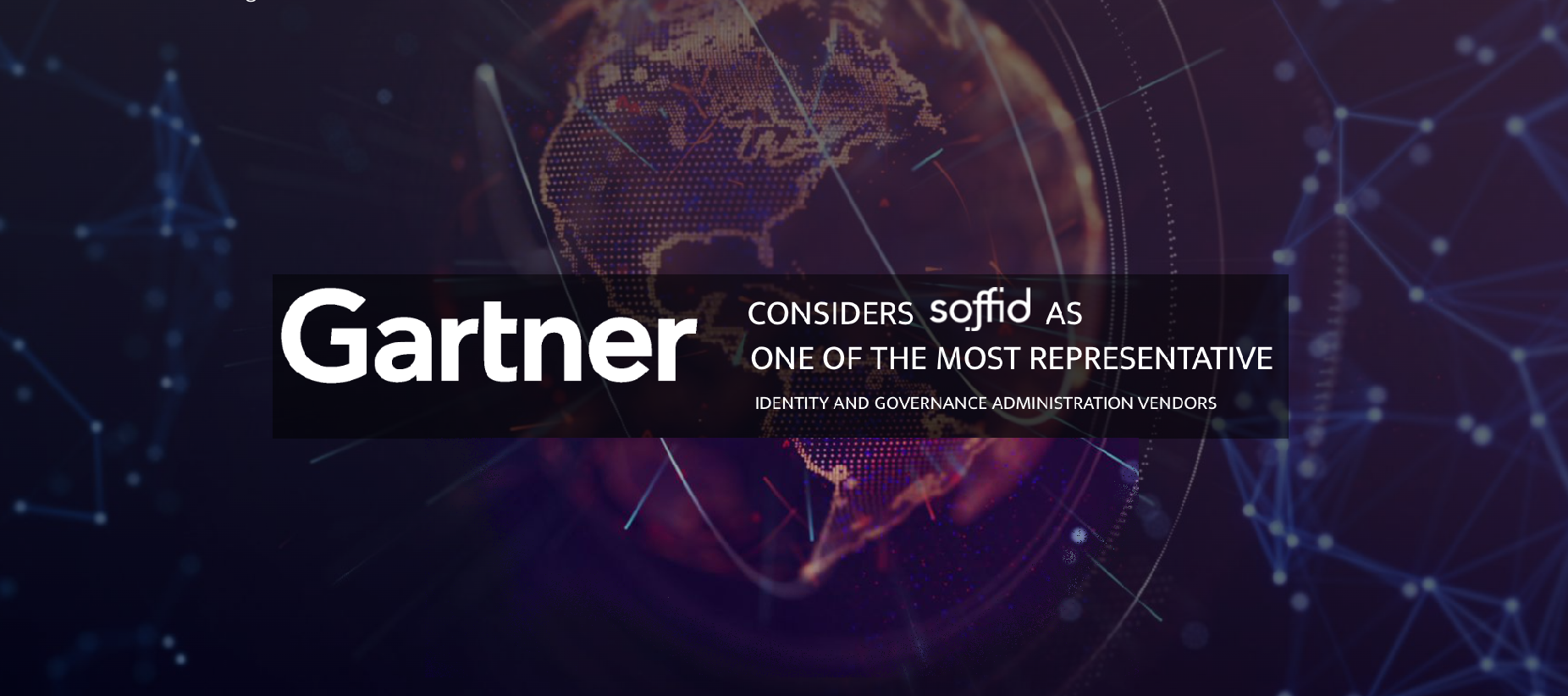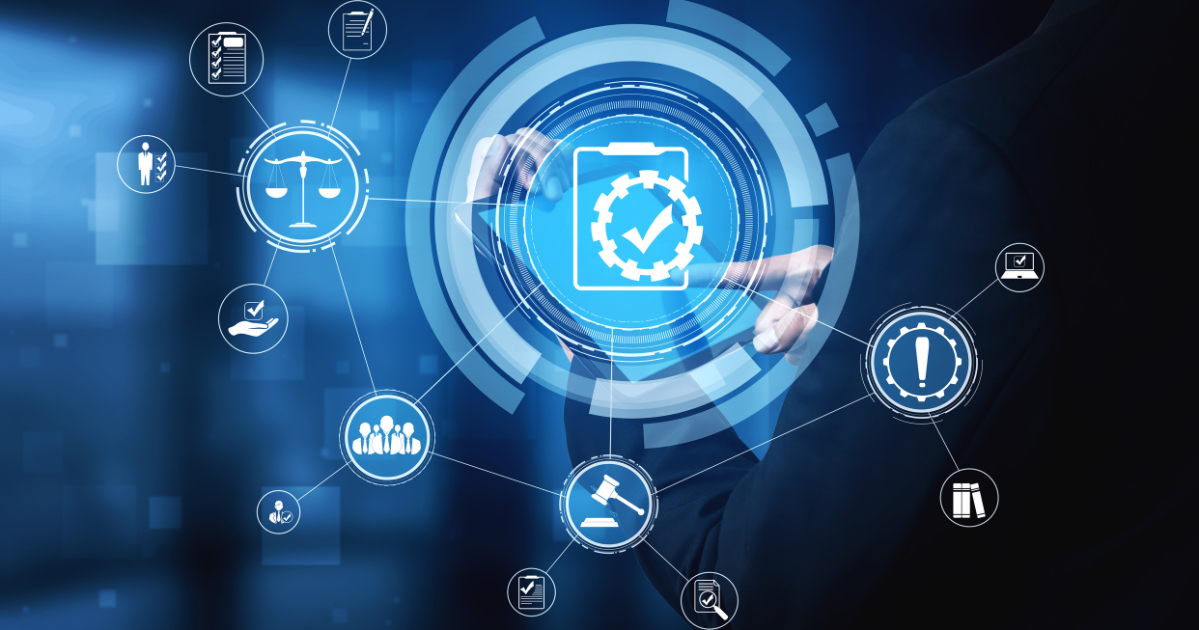
by Rebeca | Nov 5, 2024 | Ciberseguridad, Customer, iam, PAM, soffid
In today’s fast-evolving security landscape, financial institutions must meet strict regulatory requirements, such as PCI-DSS certification, to ensure the protection of sensitive data. Recently, Soffid IAM had the opportunity to assist a finance client in achieving PCI-DSS compliance by implementing a robust Privileged Access Management (PAM) solution. Here, we explore the challenges, solutions, and outcomes of this rapid, three-week project.
Project Scope and Goals
The finance sector customer needed to enhance security across their network infrastructure, specifically by:
- Enabling Multi-Factor Authentication (MFA) for secure access.
- Implementing session recording for accountability.
- Supporting a variety of devices, including:
- Windows and Linux servers
- Backbone routers
- Basic network switches
- Critical management applications
This broad device range required a flexible approach to integrate different protocols and technologies, ensuring the new security measures aligned with their existing infrastructure.
Implementing a Multi-Factor Authentication (MFA) Solution
To facilitate user access while enhancing security, we deployed an MFA solution that allowed users to self-register their MFA devices. By integrating with Active Directory, end users could verify themselves using their AD password, simplifying and expediting the enrollment process.
Addressing Legacy Application Access
One significant challenge was securing legacy applications. While some applications supported SAML or OpenID Connect protocols, others did not, requiring alternative solutions:
- For SAML and OpenID-Compatible Applications: We configured Soffid’s identity provider to offer MFA, ensuring a consistent and secure login experience.
- For Non-Compatible Applications: We deployed a web single-sign-on module, acting as a reverse proxy, to connect legacy applications to the identity provider via SAML. This setup enabled seamless user authentication without modifying the application itself.
Securing Server and Network Access
To secure access to various network devices, we used Soffid’s PAM launch server, which allows MFA-based access:
- For Windows and Linux Servers: The PAM server enabled secure access via RDP for Windows and SSH for Linux servers.
- For Backbone Routers: TACACS+ MFA was configured to support any TACACS+-compatible device, which enabled fast configuration for IOS routers and switches.
- For Basic Switches: As these switches lacked TACACS+ support and used a web-based management interface, we employed Soffid’s browser-in-browser PAM addon, providing administrators with secure browser sessions that supported recording and monitoring.
Just-in-Time Permissions for Testing Environments
To meet the customer’s needs for dynamic access in their development environments, we implemented just-in-time (JIT) permissions. This feature allowed testers and developers access to necessary systems while ensuring these privileges were automatically revoked after the testing period, minimizing exposure to security risks.
Key Challenges Overcome
Throughout this project, several complex challenges were addressed:
- Integrating Legacy Applications without altering their core login processes.
- Supporting Simple Switches through innovative browser-based access solutions.
- Implementing Just-in-Time Permissions within a diverse technological landscape.
Results Achieved
Within the short timeframe of three weeks, the Soffid team delivered a powerful solution that achieved PCI-DSS compliance for the customer. Key benefits included:
- Enhanced Security through MFA across all critical systems.
- Increased Monitoring capabilities on vital assets, helping ensure accountability and compliance.
- Reduced Risk Exposure by removing unnecessary permissions for development and testing environments.
This case study demonstrates Soffid IAM’s expertise in delivering adaptable and effective PAM solutions, even in complex and mixed technology environments like the finance sector. With a flexible, integrated approach, we were able to meet our client’s stringent security requirements on time and within scope, further reinforcing Soffid’s commitment to providing industry-leading security solutions.

by Rebeca | Oct 23, 2024 | Release, soffid
As cybersecurity threats grow more sophisticated, the need for robust Identity Governance and Administration (IGA) solutions has never been more critical. In the latest 2024 Gartner Market Guide for IGA, Soffid IAM once again stands out as a recommended vendor, recognized for its comprehensive and integrated approach to identity governance.
But what exactly makes Soffid IAM a standout in Gartner’s eyes? Below, we explore the key strengths highlighted in the report that have propelled Soffid IAM to the forefront of the Identity and Access Management (IAM) market.
1. Converged IAM Capabilities: One Unified Platform
Gartner emphasizes Soffid IAM’s ability to converge multiple IAM functionalities into a single platform. Soffid integrates Identity Governance (IGA), Privileged Access Management (PAM), Access Management (AM), and Single Sign-On (SSO), providing businesses with an all-in-one solution that simplifies identity management processes while ensuring high-level security.
This convergence reduces the complexity of managing multiple tools and allows organizations to govern identities, manage privileged access, and authenticate users seamlessly—whether on-premises or in the cloud.
2. Scalability for Enterprises of All Sizes
Another major factor that sets Soffid IAM apart is its scalability. Gartner notes that Soffid IAM is flexible enough to meet the needs of both small to mid-sized companies and large enterprises. Whether managing a few thousand users or millions, Soffid IAM’s platform adapts to the organization’s size without compromising security or performance.
For organizations undergoing digital transformation or rapid growth, Soffid IAM provides the flexibility and scalability to expand their identity governance infrastructure as they evolve.
3. SaaS and On-Premise Support
Modern businesses often operate in hybrid environments, combining on-premise systems with cloud-based solutions. Soffid IAM offers both SaaS and on-premise deployment options, ensuring that businesses can implement the platform based on their specific infrastructure needs.
With Soffid’s identity orchestration capabilities, companies can seamlessly integrate the platform into their existing ecosystems using out-of-the-box (OOTB) connectors, minimizing disruption and ensuring a smooth transition.
4. Advanced Security and Compliance Features
In industries where security and regulatory compliance are paramount—such as financial services, healthcare, and government—Soffid IAM delivers critical features to ensure data protection and regulatory adherence. These include:
- Identity registration for non-employees, such as contractors or temporary staff.
- Secrets management and Segregation of Duties (SOD) to prevent conflicts of interest.
- CIEM (Cloud Infrastructure Entitlement Management), which enables businesses to securely manage access in cloud environments.
5. Cost-Effective and Future-Ready
Finally, Gartner highlights the cost-effectiveness of Soffid IAM. The platform’s consolidated pricing model allows businesses to access advanced IAM capabilities without overspending. At the same time, Soffid’s continuous investment in research and development ensures that the platform remains future-ready, equipped to handle emerging cybersecurity challenges and evolving regulatory requirements.
Learn how Soffid IAM can elevate your identity governance strategy.

by Rebeca | Oct 15, 2024 | Customer, cybersecurity, iam
Digital transformation in identity and access management (IAM) has become crucial for businesses navigating the complex challenges of modern IT environments. This success story illustrates how Soffid IAM enabled a traditional company to streamline its operations, improve security, and enhance user experience through a comprehensive identity management strategy.
The Challenge: Managing Complex, Legacy Systems
In 2018, a traditional company with a diverse and intricate IT landscape—spanning Windows servers, Linux servers, iSeries platforms, and legacy applications—was facing growing complexity in managing identities. The organization struggled with onboarding new employees, deactivating users upon their departure, and managing the countless permissions required throughout the lifecycle of each identity. The high operational cost and lack of automation were pressing challenges that required an innovative solution.
Soffid IAM’s Approach: A Converged Identity Platform
Soffid stepped in to simplify and unify the company’s identity management processes through its converged IAM platform. The initial phase focused on classic identity governance:
- Automated Identity Lifecycle Management: Soffid connected the organization’s payroll system to act as the authoritative identity source, automating the creation and deactivation of employee identities.
- Self-Service Portal: A portal with user-friendly interfaces and automated workflows was established, empowering employees to manage their own permissions and external identities without constant administrative involvement.
This first step connected nearly 40 applications to the Soffid identity governance system, reducing manual effort and increasing operational efficiency.
Adapting to New Challenges: Remote Work and Security
By 2020, the global shift to remote work prompted the organization to enhance its user experience and improve security. Soffid’s converged platform allowed for a seamless integration of identity governance and access management in two critical steps:
- Unifying User Authentication: Soffid enabled the configuration of an identity provider with SAML and OpenID-Connect protocols, streamlining the process of authenticating users across critical applications.
- Implementing Multi-Factor Authentication (MFA): Soffid simplified the adoption of MFA across the organization. Employees were provided with options such as SMS and mobile app authentication, ensuring secure access to both applications and desktops.
This approach provided robust, flexible security without compromising user experience, making it easier for remote workers to securely access essential systems.
Scaling Up: Implementing Privileged Access Management (PAM)
In 2022, the organization took its security efforts a step further by testing Soffid’s Privileged Access Management (PAM) module. The aim was to protect critical resources and monitor high-privilege access with advanced security measures. Over two years, Soffid’s PAM solution was fully deployed, covering:
- System Coverage: Windows, Linux, iSeries, and critical applications such as SAP R/3.
- User Access Control: Internal users gained direct access to the PAM solution, while external customers were granted access to specific resources during business hours, with an approval-based workflow for sensitive actions.
The PAM solution added another layer of security by controlling, tracking, and protecting access to the company’s most critical assets.
Looking Ahead: Automation and Efficiency
Today, the company continues to evolve its identity management strategy with Soffid by configuring automated responses to common security incidents. This automation enhances operational efficiency and ensures proactive threat mitigation.
Why Soffid IAM Stands Out:
- Converged IAM Solution: Soffid integrates identity governance, access management, and privileged access into a single, cohesive platform, reducing costs and improving security.
- Future-Proof Flexibility: As the company’s needs evolved, Soffid’s platform was able to scale and adapt, ensuring it could meet both immediate and long-term goals.
- Operational Efficiency: With automated workflows and a self-service portal, Soffid significantly reduced administrative overhead and the time required to manage identities.
Soffid’s journey with this organization demonstrates the power of a unified IAM platform that goes beyond identity management to create lasting value for businesses navigating complex IT environments.
Takeaway: Identity management isn’t a one-time project—it’s a journey that requires flexibility, scalability, and continuous improvement. With Soffid IAM, organizations are empowered to streamline operations, enhance security, and stay ahead of the evolving challenges in today’s digital landscape.
Would you like to learn how Soffid IAM can drive transformation in your organization? Contact us today or request a demo to explore how we can support your identity management needs.

by Rebeca | Oct 8, 2024 | News, soffid
In its latest 2024 Market Guide for Identity Governance and Administration (IGA), Gartner once again recognized Soffid IAM as one of the leading identity governance solutions. This recognition places Soffid as the only Spanish company included in the guide, reaffirming its commitment to innovation and excellence in the Identity and Access Management (IAM) space.
Why Did Gartner Select Soffid IAM?
The Gartner Market Guide highlights Soffid IAM’s advanced capabilities across multiple areas, particularly its ability to converge critical IAM solutions into one platform. This includes Access Management (AM), Single Sign-On (SSO), Identity Governance and Administration (IGA), Identity Relationship Control (IRC), and Privileged Access Management (PAM). This convergence not only reduces operational complexity but also empowers organizations to manage identities and access more efficiently while maintaining strong security standards.
- Converged and Scalable Platform
One of the main reasons Soffid IAM stands out in Gartner’s report is its focus on IAM convergence. By integrating IGA, PAM, and AM into a single, unified solution, Soffid provides organizations with a comprehensive approach to managing both identity governance and privileged access, eliminating the need for multiple disconnected tools.
This convergence is also supported by a scalable model that allows businesses to manage anywhere from a few hundred to millions of identities without compromising performance or security.
- Support for SaaS and On-Premise Deployments
As digital transformation accelerates, many organizations adopt hybrid environments that combine cloud solutions with on-premise infrastructures. Soffid IAM is perfectly suited for these hybrid environments, offering support for both SaaS and on-premise deployments, giving organizations the flexibility to manage identities across any infrastructure.
Soffid’s focus on identity orchestration also ensures seamless integration into existing systems through out-of-the-box (OOTB) connectors, allowing for quick, disruption-free implementations.
- Advanced Features for Complex Environments
Soffid IAM provides a range of advanced features that enable organizations to meet even the most stringent security requirements. These capabilities include:
-
-
- Identity registration for non-employees, which is critical for organizations that work with contractors or temporary staff.
- Segregation of Duties (SOD) to ensure that roles and responsibilities are assigned without conflicts within the organization.
- CIEM (Cloud Infrastructure Entitlement Management) to manage access rights in cloud environments.
- Cost-Effective and Efficient Solution
Another point that Gartner highlights in its report is the cost-effectiveness of Soffid IAM. By offering an all-in-one platform, organizations can reduce the costs associated with managing and maintaining multiple IAM tools. This results in a solution that is both cost-efficient and operationally effective, without compromising on security or performance.
Soffid IAM as a Future-Proof Solution
Soffid IAM’s recognition in the Gartner 2024 Market Guide reinforces its position as a leader in Identity Governance and Administration (IGA). By providing a comprehensive, scalable, and cost-effective solution, Soffid helps organizations manage their identities and access securely and efficiently, while meeting the highest regulatory standards.
Want to learn how Soffid IAM can transform identity governance for your organization? Request a personalized demo or contact us for more information.

by Rebeca | Oct 2, 2024 | soffid
In today’s regulatory landscape, ensuring compliance is not just a legal obligation, it’s a critical business priority. For industries managing sensitive data—such as finance, healthcare, and telecommunications—failing to comply with standards like GDPR, HIPAA, and ISO27001 can result in significant fines, reputational damage, and operational disruption.
At the heart of regulatory compliance lies Identity and Access Management (IAM), a key factor in securing user identities and controlling access to sensitive information. The complexity of compliance is often exacerbated by disparate systems and scattered data sources. However, this is where converged IAM platforms can make a difference by streamlining both security management and the auditing process.
The Challenge of Compliance in a Fragmented Environment
Compliance requires a full view of who has access to what data, how this access is granted, and whether it aligns with regulatory requirements. In many organizations, legacy systems, cloud environments, and third-party applications create silos that make it difficult to track identity lifecycles consistently. This fragmentation poses challenges in:
- Auditing Access: When user identities are managed across various systems, tracking and auditing access to data becomes a time-consuming and error-prone process.
- Reporting: Compliance audits require detailed reporting on access control, security policies, and the state of identities within an organization. Gathering this information from multiple disconnected sources complicates and delays audit readiness.
- Policy Enforcement: Enforcing consistent security policies across environments is challenging when each system has its own access management protocols.
How Converged IAM Simplifies Compliance
By integrating Identity Governance and Administration (IGA), Privileged Access Management (PAM), and Access Management into a single, unified platform, converged IAM solutions such as Soffid offer a streamlined approach to managing identities and meeting compliance requirements. Here’s how:
1. Unified Identity Governance
A converged IAM platform provides a single source of truth for all identity-related activities. This means that every identity—whether internal or external—can be tracked and managed from a central platform. With centralized visibility, organizations can easily generate reports on user access, permissions, and changes made to critical systems.
For compliance audits, this unified governance simplifies the process of proving that only authorized individuals have access to sensitive data, ensuring that the principle of least privilege is maintained across the organization.
2. Automated Reporting and Continuous Monitoring
Manual reporting can slow down compliance audits and increase the risk of human error. A converged IAM solution automates the collection of audit trails, providing real-time insights into who accessed what, when, and how.
With continuous monitoring and automated reporting, organizations can meet the documentation and reporting requirements of regulations such as GDPR and HIPAA more efficiently. Instead of scrambling to gather data at the last minute, auditors can access detailed, up-to-date reports with the click of a button.
3. Consistent Policy Enforcement
Compliance is not just about monitoring access—it’s also about enforcing consistent security policies across the organization. A converged IAM platform applies security policies uniformly, ensuring that every user’s access is governed by the same rules, regardless of the environment (on-premise, cloud, or hybrid).
For example, enforcing multi-factor authentication (MFA) for sensitive data access or automatically revoking permissions when an employee leaves the company can be managed seamlessly from a single platform, significantly reducing security gaps.
4. Enhanced Role-Based and Attribute-Based Access Control
Role-Based Access Control (RBAC) and Attribute-Based Access Control (ABAC) are both critical in ensuring compliance. A converged IAM platform can integrate these access control methods to provide granular control over who can access what data. This not only enhances security but also makes it easier to demonstrate to auditors that data access is strictly managed and aligned with business roles.
5. Efficient Identity Lifecycle Management
One of the key requirements for compliance is ensuring that users are granted the right access at the right time—and that access is revoked when no longer necessary. A converged IAM platform automates the identity lifecycle management process, from onboarding and access provisioning to deactivation and auditing. This automation ensures that no access is overlooked, reducing the risk of non-compliance due to human error.
The Business Impact of Simplifying Compliance
By leveraging a converged IAM platform, organizations not only ensure compliance with regulatory standards but also reduce the time and costs associated with preparing for audits. The automation and centralization provided by these platforms also improve operational efficiency, allowing IT teams to focus on strategic initiatives rather than being bogged down by manual compliance tasks.
Future-Proofing Compliance with Converged IAM
As regulatory requirements continue to evolve, businesses need solutions that can adapt quickly. Converged IAM platforms like Soffid empower organizations to stay compliant while streamlining operations and reducing the complexity of audits and reporting. With unified governance, automated reporting, and consistent policy enforcement, organizations can meet their compliance goals more easily—ensuring that security is not just a checkbox, but a cornerstone of their business strategy.






